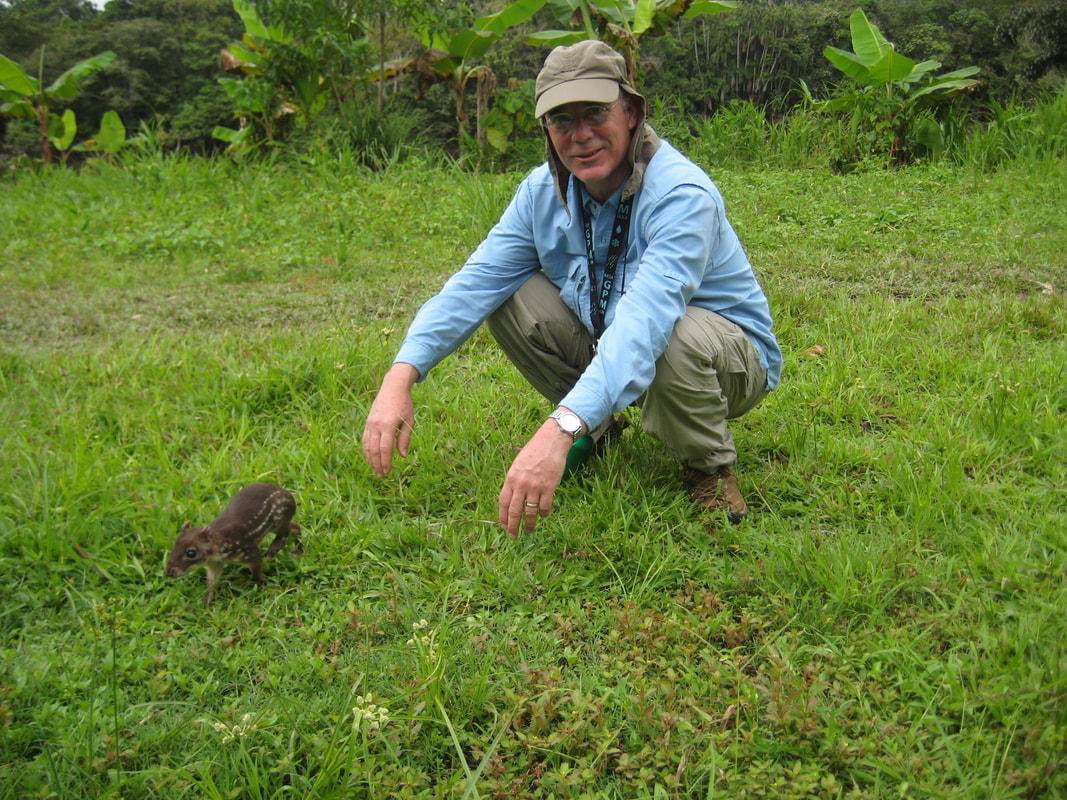Ecohydrology is the integration of the hydrosphere, atmosphere and biosphere. That we had to create a term to describe what we should be doing speaks to how wrong, and myopic, we were just a few years ago. It should be obvious that at certain scales in space and time those elements of the Earth system must evolve together in an exquisite dance.
What are your undergraduate and graduate degrees in?
My undergraduate degree was in Civil Engineering, focusing on the environmental side – there was no Environmental Engineering then. My MS is in Civil Engineering – Water Resources and my Sc.D. in Hydrology and Water Resources. All my degrees are from MIT, where I spent most of my professional career.
How did you arrive at working in/thinking about ecohydrology?
I have had the opportunity of participating in the definition and emergence of modern hydrology. As a graduate student in the early 1970’s, experts commonly stated that “land masses were not important to the Earth climate”. That quote from an oceanographer – whose name I do not remember – has always stayed with me because it is absolute and wrong. It served as a motivator of much of my work. I was lucky in having Professors Peter S. Eagleson and Ignacio Rodriguez-Iturbe as mentors and then colleagues. They pioneered eco-hydrology and much of modern hydrology. They championed the inseparable relationship between land and atmosphere, an idea that I follow in all my work and have worked to build into the education of over 70 students and post-docs that I have been privileged to mentor.
Quoting from a small piece I wrote at the occasion of my offering the 2020 Langbein Lecture: “Back in 1987, Pete Eagleson and I wrote an editorial in EOS, entitled: Hydrology, The Forgotten Earth Science (Bras and Eagleson, 1987). We argued that development of hydrology had been driven by societal problems at such a rate that: “The cultivation of hydrology as a science per se has not occurred, and there has been no established platform within the hierarchy of science on which to build a coherent understanding of the global water cycle”.” I feel satisfied that we have come a long way since then, largely because of the recognition that the hydrosphere, atmosphere and biosphere are inseparable – ecohydrology.
What do you see as an important emerging area of ecohydrology?
In over 35 years since the emergence of ecohydrology, we have just touched the tip of the iceberg and remain at infancy. Much of our work has been focused in quantifying how plants mediate the hydrologic and energy cycles and how, in turn, they are a product of the very same environment they create. We have approached the problem at the conceptual, system, level – largely because we do not know any better and because anyone of us is limited in our knowledge of everything that plays into how climate, soil, vegetation and the hydrosphere operate. We lack sufficient, in-depth, knowledge to be predictive of all the interactions that occur in nature. The only way to overcome this situation will be to learn to work in teams of people with different in-depth knowledge. We must start by agreeing on a common language to communicate. Particularly important areas that that remain to be explored in the context of ecohydrology are the microbial ecosystem and improving predictability of the inevitable changes that a warming climate will bring about.
Do you have a favorite ecohydrology paper? Describe/explain.
To me, the cornerstone work is that of Peter S. Eagleson in a series of 7 papers, all published in an issue of Water Resources Research in 1978, with the common title “Climate, Soil and Vegetation”. This was the first, and boldest, attempt to quantify (not just describe) a climate, soil, vegetation system, what we now call ecohydrology. He later published a book that captured and expanded on his ideas - Ecohydrology: Darwinian Expression of Vegetation Form and Function, Cambridge University Press, 2004. Eagleson was bold in many ways. First, he brought together an extraordinary diverse set of knowledge into one hypothesis. Second, he hypothesized a debatable concept of pseudo-equilibrium, a climax, among all the different components of the Earth system. To me this is a beautiful idea which, at its essence, I believe correct. We are a product of chance and necessity. Third, he had the courage to quantify all the relationships he postulated. This work was the foundation of ecohydrology.
What do you do for fun (apart from ecohydrology)?
I have to begin by saying that I simply love all I do. Since very early on, 1982, I developed my career in parallel to increasing administrative responsibilities, culminating as Provost of Georgia Tech, a position I just left. But I am far more than my work. I am inherently curious about almost anything and enjoy everything from history to politics. I enjoy my family and share as much time as we can together. I have always had a little adventurous streak in me. I was an active single engine airplane pilot. I love scuba diving – although do not do it as often as I would like. I have glided and jumped out of airplanes. These days I love driving my sports car and riding my horses with my wife. Life has been good to me and if I had to do it over again, I still would be a professor, the best job ever, and a hydrologist.

 RSS Feed
RSS Feed